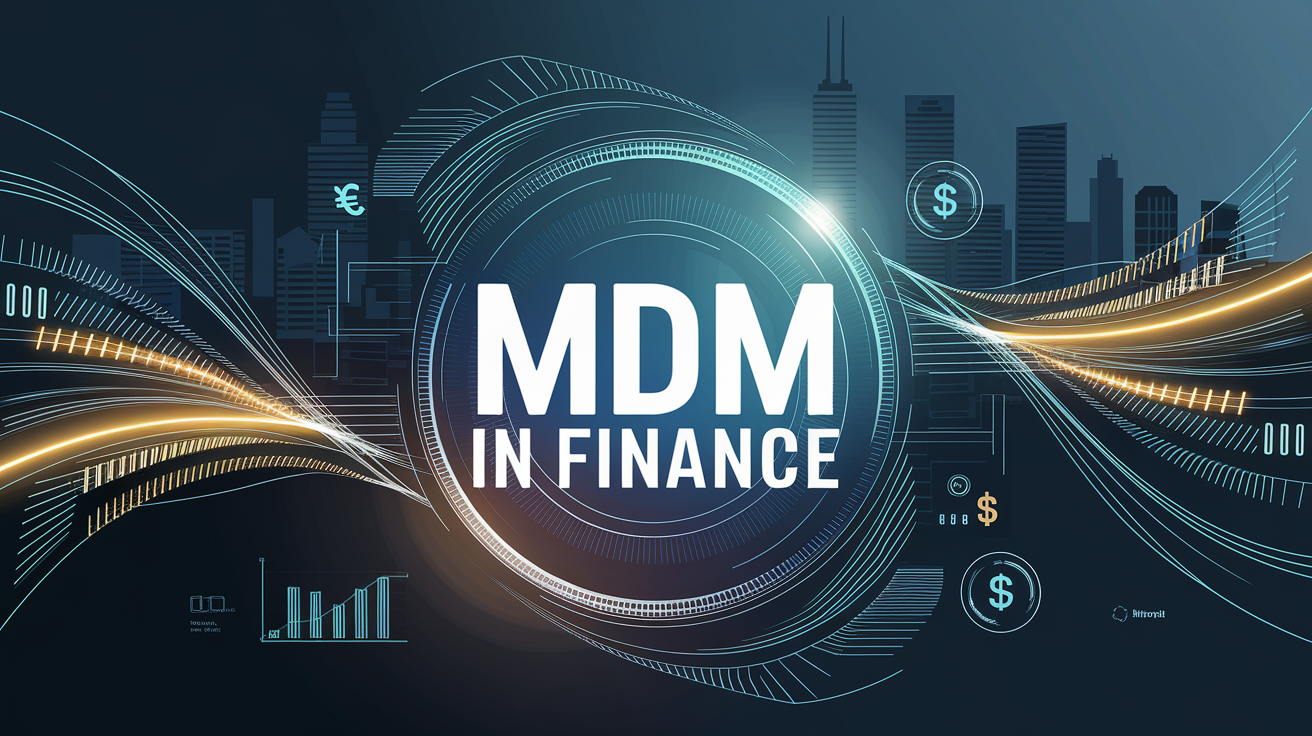
Introduction: Why Data Mastery is Mission-Critical in Finance
In today’s data-driven financial ecosystem, Master Data Management (MDM) isn’t just a back-office function, it’s a strategic imperative. Financial institutions are swimming in vast amounts of customer, transaction, regulatory, and market data. Yet, without a centralized approach to managing that data, even the most sophisticated organizations are vulnerable to regulatory penalties, fraud, missed growth opportunities, and operational chaos. (WNS)
MDM serves as a foundational layer that ensures data accuracy, consistency, and governance across systems and departments. When implemented effectively, it transforms fragmented, unreliable information into a single source of truth that empowers faster decision-making, sharper customer insights, and stronger compliance postures.
Let’s explore how poor data quality can quietly erode a financial institution’s effectiveness and how MDM turns that risk into a competitive edge.
The Hidden Costs of Poor Data in Financial Services
1. Incomplete Customer Profiles Undermine Personalization
In the race to provide tailored financial services, customer intelligence is everything. Banks and financial firms rely on detailed customer data to offer personalized experiences, whether it’s suggesting a credit card upgrade, recommending a mortgage plan, or detecting behavioral anomalies.
But when that data is incomplete, outdated, or scattered, customer profiles become distorted. Marketing teams push irrelevant offers, relationship managers miss cross-sell opportunities, and customers feel undervalued or misunderstood. For instance, if a customer’s high-net-worth activity is logged in one system but not reflected in another, they may be treated like a low-value client, resulting in a missed revenue opportunity and possibly a lost customer. (Deloitte United States)
2. Regulatory Compliance Becomes a Minefield
Financial institutions operate under the scrutiny of strict regulations like GDPR, Basel III, MiFID II, and SOX. These frameworks mandate accurate recordkeeping, transparent reporting, and strong audit trails.
Poor-quality data introduces inconsistencies and gaps that regulators can and often do penalize. A missing timestamp, misclassified transaction, or outdated customer address can lead to compliance breaches, triggering fines and reputational damage.
MDM helps establish data lineage and traceability, ensuring data is governed according to policy and instantly available for regulatory review, with no scrambling required.
3. Fraud Detection Breaks Without Reliable Data
Modern fraud detection systems rely on real-time data and machine learning algorithms to flag anomalies and suspicious behaviors. But if key data inputs like IP addresses, login history, or transactional patterns are inaccurate or siloed across systems, fraudulent activities can slip through the cracks.
With an integrated MDM system in place, financial firms gain a consolidated view of customer behavior and transaction history, strengthening fraud analytics and enabling faster incident response. (FirstLogic)
4. Data Fragmentation Kills Innovation
From AI-powered credit scoring to predictive financial advisory services, innovation in finance thrives on quality data. However, fragmented, duplicated, or low-integrity datasets derail these efforts.
AI models trained on dirty data produce unreliable outputs, while data scientists waste precious hours cleaning and reconciling records. MDM centralizes and standardizes critical data, enabling innovation teams to build smarter models and go to market faster.
5. M&A Transactions Get Stalled by Data Inconsistencies
Mergers and acquisitions are complex, high-stakes ventures. When merging two financial institutions, one of the biggest roadblocks is aligning their disparate data systems.
Conflicting formats, inconsistent entity definitions, and duplicate customer records can delay integration, inflate costs, and slow time-to-value. A strong MDM strategy mitigates these issues by harmonizing data structures pre- and post-merger, ensuring a faster, cleaner transition. (DataLayer)
6. Operational Bottlenecks Waste Time and Money
Front-office teams waste time reconciling mismatched customer details. Middle-office teams manually align product records. Back-office teams correct reporting errors late in the cycle. This is the everyday cost of bad data.
MDM eliminates these inefficiencies by creating a centralized hub of trustworthy information, reducing manual errors, lowering operational costs, and freeing up staff to focus on value-added tasks.
How MDM Transforms Data into a Strategic Asset
1. Empowering Data-Driven Growth
In today’s financial landscape, data isn’t just an enabler, it’s a growth driver. MDM allows institutions to treat data not as an IT byproduct but as a strategic resource. By unifying and cleansing key datasets, organizations gain the insight needed to:
-
Spot emerging customer needs
-
Launch personalized products faster
-
Optimize branch and channel performance
-
Develop competitive pricing models
A robust MDM framework turns reactive decision-making into a proactive, insight-led strategy.
2. Sharpening Executive Decision-Making
Imagine a scenario where the Chief Risk Officer and Chief Marketing Officer are pulling reports from two different systems with conflicting numbers. That’s a recipe for confusion and misalignment.
MDM eliminates data silos and provides consistent, real-time dashboards, allowing leadership to base decisions on accurate, synchronized metrics. The result: Smarter decisions made faster.
3. Uncovering Hidden Revenue Opportunities
By analyzing cleansed, consolidated data, financial institutions can identify profitable customer segments, track product usage patterns, and anticipate lifecycle events.
For example, a bank may notice a pattern where customers in a certain age group and income bracket are more likely to take out auto loans. This insight, made possible through MDM, can drive targeted marketing, increase conversion rates, and open new revenue streams.
4. Enhancing Cross-Department Collaboration
MDM enables different teams—risk, compliance, marketing, and customer service to operate from a common data foundation. This cross-functional visibility promotes transparency, reduces miscommunication, and enhances the organization’s agility in responding to both threats and opportunities.
Conclusion: Elevate Your Financial Data Strategy with MDM
Poor data quality is more than an inconvenience in finance, it’s a systemic risk. From fraud blind spots and compliance breaches to stalled innovation and missed revenue, the cost of unreliable data is steep. (Mckinsey & Company)
Master Data Management flips the script. It gives financial institutions the power to turn data chaos into clarity and fragmented records into revenue-generating insights. In doing so, MDM doesn’t just solve problems, it creates a platform for long-term innovation, resilience, and growth.
Facilitating AI Integration with Pacific Data Integrators (PDI)
Integrating Generative AI and Large Language Models (LLMs) into banking and finance can seem daunting, but with Pacific Data Integrators (PDI), it becomes a streamlined and supported journey. Partnering with PDI ensures a seamless transition and enduring success, turning challenges into opportunities. Discover how PDI's tailored solutions can transform your business by consulting with our experts today.

Posted by PDI Marketing Team
Pacific Data Integrators Offers Unique Data Solutions Leveraging AI/ML, Large Language Models (Open AI: GPT-4, Meta: Llama2, Databricks: Dolly), Cloud, Data Management and Analytics Technologies, Helping Leading Organizations Solve Their Critical Business Challenges, Drive Data Driven Insights, Improve Decision-Making, and Achieve Business Objectives.




